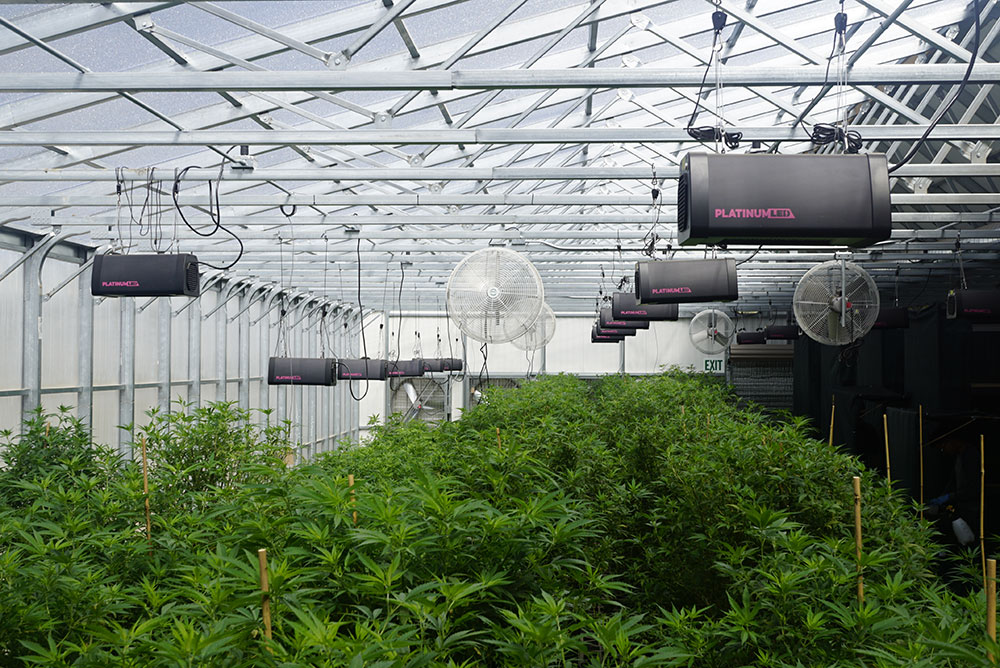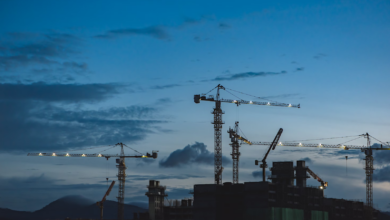In recent years, the United States has witnessed a significant shift in its approach to cannabis, with several states legalizing its use for both medical and recreational purposes. However, despite these changing regulations, the cannabis industry remains subject to stringent rules and regulations, especially when it comes to the cultivation and production of cannabis. One such critical requirement set by the U.S. Food and Drug Administration (USFDA) is that the THC content (tetrahydrocannabinol) in cannabis must not exceed 0.3% of the dry weight composition. Compliance with these stringent guidelines has given rise to a unique solution: the use of commercial greenhouses for cannabis facility construction.
Commercial greenhouses offer a viable option for cannabis facility construction due to several compelling reasons. Firstly, these controlled-environment facilities allow for precise management of environmental factors, such as temperature, humidity, and light exposure, essential for cultivating cannabis with consistent and predictable THC levels. By providing a controlled and stable environment, greenhouses ensure that the cannabis crop remains within the legal limits.
Secondly, greenhouses offer a sustainable and cost-effective solution for cannabis cultivation. They harness natural sunlight and reduce energy consumption, making them an environmentally friendly choice. Additionally, the controlled conditions within greenhouses lead to higher crop yields and quality, ultimately improving the efficiency and profitability of cannabis cultivation.
Moreover, greenhouses enable year-round cultivation, ensuring a steady and uninterrupted supply of cannabis products to meet the growing demand. This is particularly crucial in the medical cannabis sector, where patients rely on a consistent supply of high-quality products.
Advantages of Using Commercial Greenhouses
Commercial greenhouses offer a range of advantages for controlled crops like cannabis, making them an attractive choice for cultivators aiming to optimize their yields and ensure consistent quality. Here are four key advantages:
- Precise Environmental Control
Commercial greenhouses provide an ideal environment for cannabis cultivation by allowing precise control over various environmental factors. Temperature, humidity, light levels, and carbon dioxide concentration can be tailored to the specific needs of cannabis plants. This level of control enables cultivators to mimic the plant’s natural growth conditions, resulting in healthier, more consistent, and predictable crop yields. It’s especially valuable for maintaining THC levels within the legal limits, as required by regulations.
- Year-Round Cultivation
Greenhouses offer the advantage of year-round cultivation. They extend the growing season and allow cultivators to produce cannabis even in adverse weather conditions. This year-round production ensures a consistent and uninterrupted supply of cannabis products, which is crucial for both the medical and recreational markets. It helps meet the ever-increasing demand and maintain a steady flow of products for consumers.
- Enhanced Crop Protection
Greenhouses act as a barrier between cannabis plants and external threats, such as pests, diseases, and harsh weather. By creating a controlled and enclosed environment, greenhouses reduce the risk of infestations and diseases, which can be devastating for cannabis crops. This, in turn, minimizes the need for pesticides and herbicides, contributing to a healthier and more environmentally friendly cultivation process.
- Optimized Resource Efficiency
Commercial greenhouses maximize resource efficiency, making them a sustainable choice for cannabis cultivation. They harness natural sunlight, reducing the need for artificial lighting and, in turn, lowering energy costs. Greenhouses also capture and recycle water efficiently, minimizing waste and conserving resources. Moreover, the controlled environment allows for improved space utilization, resulting in higher crop yields per square foot compared to outdoor cultivation.
How To Go About It?
Constructing a commercial greenhouse is a complex endeavor that involves careful planning, design, and execution. Here are six important points to consider when building a commercial greenhouse:
- Site Selection and Preparation
Begin by selecting an appropriate location for your commercial greenhouse. Factors to consider include proximity to markets, access to utilities (water and electricity), sunlight exposure, and local climate conditions. Ensure the site is level and well-drained to prevent waterlogging.
Site preparation involves clearing the area, grading the land, and ensuring proper drainage. Installing a perimeter fence can provide security and protection from wildlife.
- Greenhouse Design and Layout
Choose the right greenhouse design based on the type of crops you plan to cultivate and the environmental control requirements. Common designs include hoop houses, gutter-connected greenhouses, and freestanding structures.
Consider factors such as ventilation, heating, and cooling systems, as well as the layout of benches, irrigation systems, and walkways within the greenhouse.
- Construction Materials
Select suitable construction materials that are durable and efficient. Common options include galvanized steel for the frame, polycarbonate or polyethylene film for covering, and insulated panels for walls.
Ensure that the materials used meet local building codes and regulations, including those related to wind and snow loads.
- Environmental Control Systems
Install environmental control systems to regulate temperature, humidity, and ventilation within the greenhouse. These systems can include fans, evaporative cooling pads, heating units, and automated venting systems.
Implement a control system that allows for remote monitoring and adjustments to maintain optimal growing conditions.
- Irrigation and Water Management
Develop a comprehensive irrigation system to ensure proper and efficient water distribution to your crops. Drip irrigation, overhead sprinklers, or ebb and flow systems are commonly used in commercial greenhouses.
Implement rainwater harvesting and water recycling strategies to minimize water usage and reduce costs.
- Regulatory Compliance and Permits
Before construction begins, it’s crucial to obtain the necessary permits and adhere to local zoning regulations and building codes. Compliance with environmental and safety standards is essential.
Consult with local authorities to ensure your greenhouse construction project meets all legal requirements.
- Construction and Maintenance
Once the design and preparations are complete, begin the construction process. It’s advisable to work with experienced greenhouse builders or contractors who can ensure that the project proceeds smoothly.
After construction, regular maintenance is essential. This includes cleaning, inspecting and repairing any wear and tear, and performing routine checks on environmental control systems.
Conclusion:
Commercial greenhouses are indispensable assets in modern agriculture, offering controlled environments that extend growing seasons and enhance crop quality. Their ability to optimize resource utilization, protect crops from external threats, and provide consistent year-round cultivation makes them a crucial tool for meeting the demands of a growing world population and addressing the challenges posed by changing climate conditions.

 How to Generate your E-Shram Card? Apply Online
How to Generate your E-Shram Card? Apply Online The Impact of Advanced SEO Techniques on Online Visibility
The Impact of Advanced SEO Techniques on Online Visibility Emirates Multi-City Flights Are Cheaper or Not?
Emirates Multi-City Flights Are Cheaper or Not? What Makes FamiSafe A Perfect Choice For Your Child Safety
What Makes FamiSafe A Perfect Choice For Your Child Safety How Technology is Changing Long-Distance Moving
How Technology is Changing Long-Distance Moving The Role of Certifiers in Commercial Development
The Role of Certifiers in Commercial Development Fun88 รีวิวเว็บคาสิโนออนไลน์ ใบอนุญาต ฟีเจอร์เด่น พร้อมแชร์ทางเข้า Fun88แท้ อัพเดทใหม่
Fun88 รีวิวเว็บคาสิโนออนไลน์ ใบอนุญาต ฟีเจอร์เด่น พร้อมแชร์ทางเข้า Fun88แท้ อัพเดทใหม่ Everything You Need To Know About The Champions League Final
Everything You Need To Know About The Champions League Final